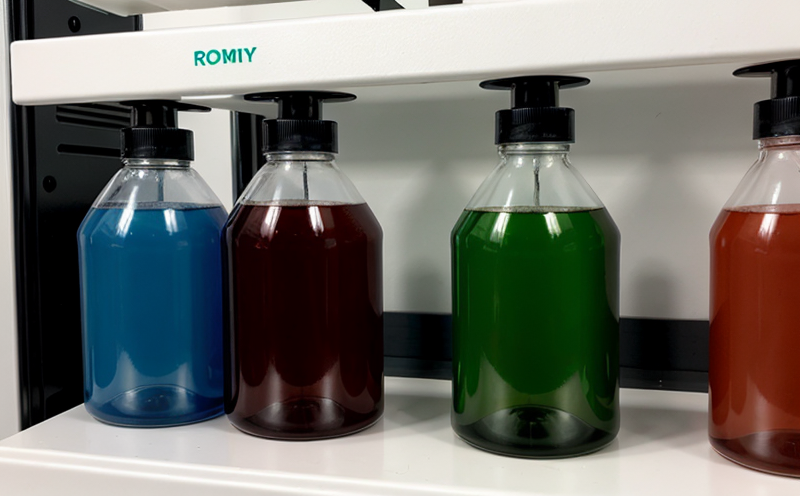ASTM D3763 High Speed Puncture Reactivity Testing in Polymers
The ASTM D3763 high speed puncture reactivity testing method is a crucial procedure used to evaluate the resistance of polymers to penetration by sharp objects. This test is particularly vital for materials that are expected to withstand mechanical stresses and impacts, such as those found in automotive components, sports equipment, and protective gear.
The test involves subjecting a polymer specimen to a high-speed puncture using a standardized needle or probe. The primary objective is to determine the maximum load required to penetrate the material before it fails. This information is essential for assessing the safety and durability of the polymer in real-world applications where sharp objects may come into contact with its surface.
The test setup includes a testing machine equipped with a high-speed camera, force transducer, and displacement sensor. The specimen is clamped securely between two plates, ensuring that any deformation or damage is accurately measured during the puncture process. Once the needle penetrates the material, the machine records the load at which failure occurs.
The ASTM D3763 method allows for precise measurement of the puncture resistance of polymers under controlled conditions. This ensures consistency and repeatability across multiple samples, making it an invaluable tool for quality assurance in manufacturing processes. By using this standardized test, manufacturers can ensure that their products meet industry standards and regulatory requirements.
The testing process is typically conducted at room temperature unless otherwise specified by the manufacturer or customer. However, some applications may require testing at elevated temperatures to simulate real-world conditions more accurately. In such cases, the specimen is heated before the puncture test to ensure that the results reflect actual performance in a wide range of environments.
Specimen preparation for ASTM D3763 involves ensuring that the material is free from defects and imperfections that could affect the outcome of the test. The thickness and dimensions of the specimen are carefully measured and documented, as these factors significantly impact the results. It’s essential to follow the manufacturer's guidelines when preparing the specimen to ensure accurate testing.
The ASTM D3763 method is widely used in various industries where polymer materials play a critical role. For instance, automotive manufacturers use this test to evaluate the puncture resistance of seat belts and airbags. In the sports equipment sector, it helps assess the durability of helmets and protective gear against sharp objects during impact.
Use Cases and Application Examples
- Automotive Industry: Testing the puncture resistance of seat belts and airbags to ensure they can withstand sharp objects in a crash scenario.
- Sports Equipment: Assessing the durability of helmets and protective gear against sharp objects during impact.
- Medical Devices: Evaluating the puncture resistance of catheters and other medical devices to ensure they can withstand handling in a clinical setting.
- Petroleum Industry: Testing the integrity of pipelines and storage tanks against potential breaches by sharp objects.
Quality and Reliability Assurance
The ASTM D3763 high speed puncture reactivity testing method plays a pivotal role in ensuring the quality and reliability of polymer materials used across various industries. By providing precise measurements of puncture resistance, this test helps manufacturers identify any weaknesses or defects in their products before they reach the market.
Quality managers can use the results of ASTM D3763 testing to make informed decisions about process improvements and product design enhancements. For instance, if a particular batch of polymers consistently fails the puncture resistance test, further investigation into the manufacturing process may be warranted. This could include examining raw material quality, processing conditions, or post-processing treatments.
Reliability engineers rely on ASTM D3763 results to assess the long-term performance of polymer materials in real-world applications. By understanding how a polymer will withstand puncture over time and under various environmental conditions, reliability engineers can predict potential failures and implement preventive maintenance strategies accordingly.
The test also supports compliance with international standards and regulations. Many industries are subject to strict quality control measures that require adherence to specific testing methods like ASTM D3763. By ensuring their products meet these standards, manufacturers demonstrate their commitment to safety and regulatory compliance.
International Acceptance and Recognition
The ASTM D3763 high speed puncture reactivity testing method is widely recognized and accepted across numerous industries and regions. Its international acceptance stems from its rigorous standardization process, which ensures that the test results are reliable and consistent globally.
Many countries have adopted ASTM standards as their national standards for quality assurance in manufacturing processes. For example, ISO 9001:2015, an internationally recognized management system standard, often requires compliance with specific testing methods like ASTM D3763 to ensure product quality and safety.
The test is also frequently referenced in other international standards such as EN 14946 for protective clothing and ANSI/ASTM F2038 for fall protection equipment. This widespread recognition enhances the credibility of the results, making ASTM D3763 a preferred choice for quality assurance professionals worldwide.
By adhering to ASTM D3763 standards, manufacturers can ensure that their products meet global market demands and comply with international regulations. This not only facilitates easier entry into new markets but also builds trust with customers who value high-quality products.





